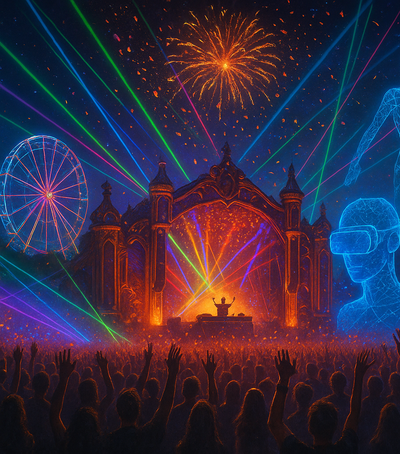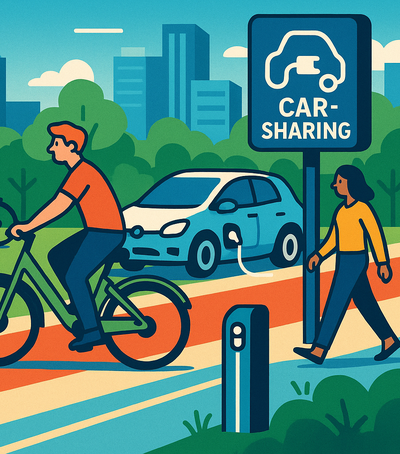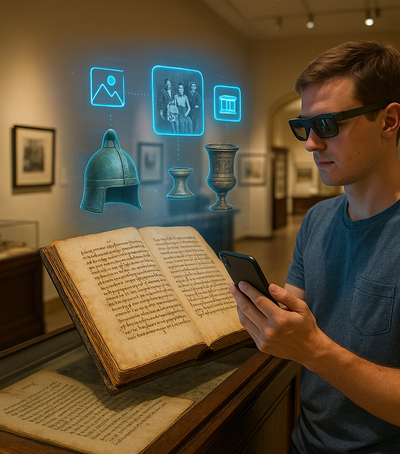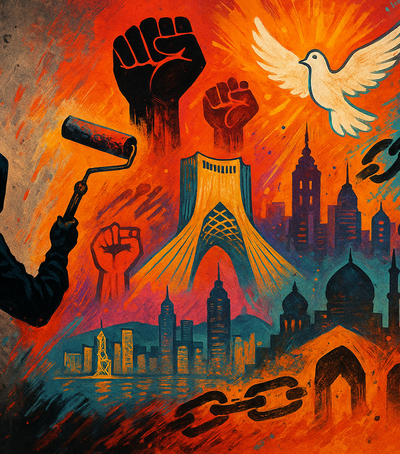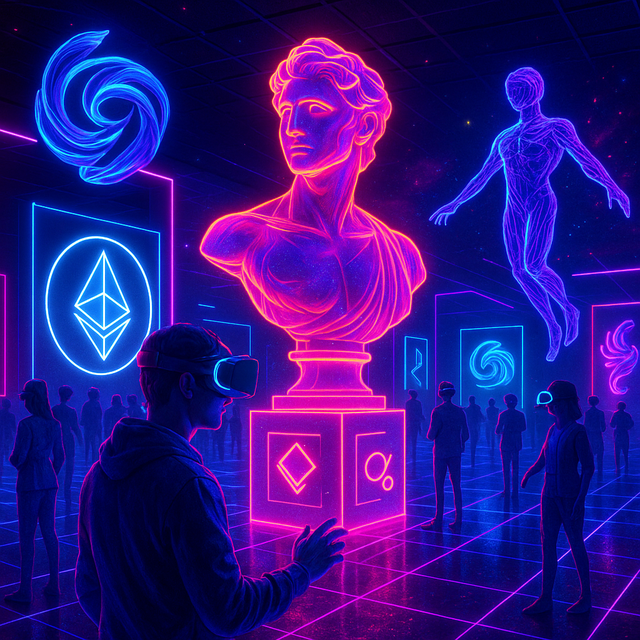
On the cusp of a digital revolution in art, the Metaverse offers a space without geographical or physical boundaries, where creators and audiences interact in new ways—whether through virtual reality (VR), augmented reality (AR), or non-fungible tokens (NFTs). This ecosystem is transforming traditional forms of artistic exhibition and performance, opening up endless possibilities for innovation, digital ownership, and collective experience.
1. Virtual Exhibitions: Gallery without Walls
Immersive VR experience
Visitors wear VR goggles and "enter" a digitally constructed gallery, where they can walk freely, utter voice comments, and immerse themselves in 3D paintings or animated installations.
Platforms like Decentraland and Spatial offer environments where artworks are erected in spaces where size and light can be modified in real time.
Access beyond distance
An exhibition in the Metaverse can be visited 24/7, by anyone in the world, without the need for physical travel. This significantly increases the audience for artists, especially for creators from emerging markets.
Interactivity and personalization
Visitors can interact with the works—e.g. change the colors of a painting, ignite/burn virtual elements, or leave digital “footprints” in certain places in the exhibition.
2. Artistic Performances in Augmented Reality
The Artist as Avatar
Performers appear as avatars in public spaces (e.g. in residential areas), walking on virtual water, dancing in gravitational spaces or interacting with fantastical landscapes.
Large VR music or theater events—like “The Wave” in Fortnite—have attracted thousands of participants simultaneously.
Adding AR elements to the real world
When visitors use their phones or tablets, they see virtual statues placed in physical museums, holographic sculptures on the street, or physical performances augmented with visual elements produced in real time.
3. NFTs: Digital Ownership and Value
Certificate of authenticity
Each NFT represents a unique “identity card” for a work of art—a digital painting, video performance, or VR installation—that is recorded on the blockchain. This makes it impossible to counterfeit and guarantees ownership.
Prices and trading within the Metaverse
Virtual galleries can sell and transfer NFTs directly within the platform. Artists receive commissions on every sale/resale (automatic royalties).
New financing models
Communities can come together to invest in VR projects, buying “shares” of co-created NFTs. Decentralized crowdfunding coincides with collective creativity.
4. Challenges and Critical Issues
Environmental impact
Many blockchains (like Ethereum) consume high energy. Projects like Tezos or Flow are trying to solve the consumption through greener consensus mechanisms.
Shared experience
Becoming part of the Metaverse requires VR/AR devices that are still expensive for a large portion of the public.
Speculative "bubble"
The stratospheric prices of some NFTs risk creating price bubbles, which could burst with consequences for creators and investors.
Technical barriers
Lack of unified standards: 3D scene formats, token transfer protocols, and UX vary from platform to platform.
5. The Future of Art in the Metaverse
Interoperability
The project of shared protocols, where a digital work can be transported between Decentraland, The Sandbox and other platforms.
Ability for global collaboration
Artists from different continents can co-curate a VR exhibition in real time, working as a multidisciplinary troupe without physically meeting.
Connection with artificial intelligence
AI can suggest personalized installations for each visitor, create ambient music based on participants’ emotional reactions, or generate 3D sculptures in real time.
“Art in the Metaverse” is not simply about elevating galleries to the digital world, but about creating an ecosystem where technology, the digital economy, and creativity come together to transcend the physical boundaries of art. With virtual reality and NFTs, creators gain new means of expression, while audiences experience art in deeper and more interactive ways. The challenges exist—from environmental issues to technical barriers—but the potential to fundamentally reshape the way art is created, enjoyed, and appreciated is immense.


